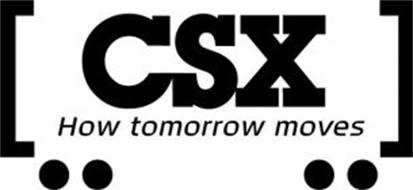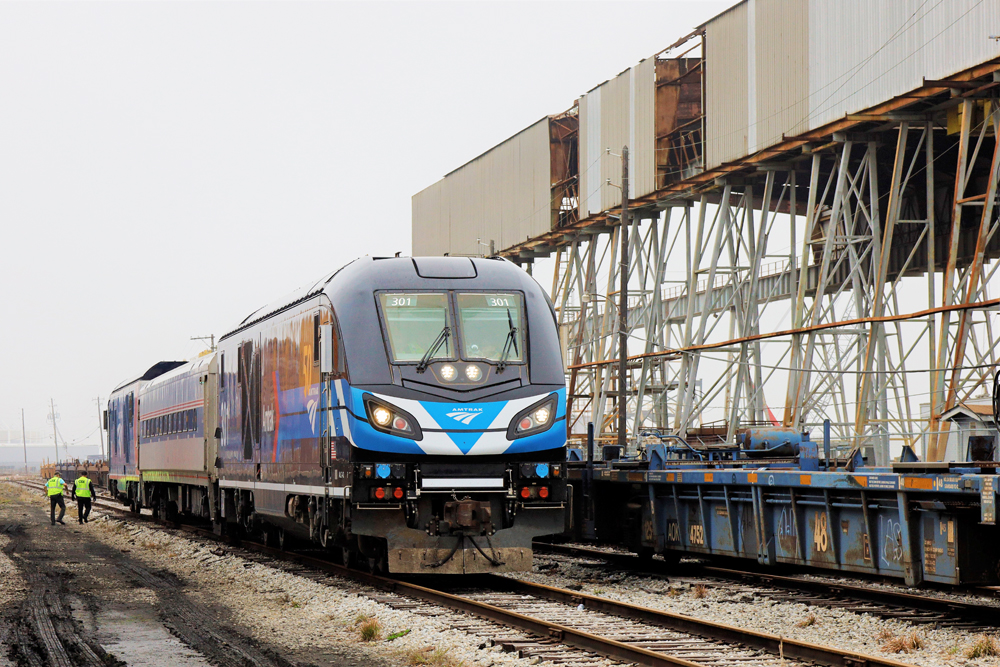CSX told customers on Oct. 12 that it would be dropping outbound service from Columbus to nearly two dozen locations. Only a handful of inbound lanes are being eliminated, the railroad said.
The announcements come on the heels of reductions in intermodal service to Detroit as well as Louisville, Ky., as CSX prepares to scale back container sorting operations at its hub in North Baltimore, Ohio.
The terminal opened in 2011 as the linchpin of a new intermodal strategy. The $175-million Northwest Ohio Intermodal Terminal was designed to support CSX’s hub-and-spoke approach to serving smaller intermodal markets.
By sorting container shipments at North Baltimore, CSX could build the density required to provide new or more frequent service to places such as Louisville, Detroit, and Columbus.
But the terminal’s sorting hub days are numbered as part of CSX’s shift to precision scheduled railroading under CEO E. Hunter Harrison, according to sources familiar with the situation.
Officially, CSX says it is reviewing operations at the terminal but that it has no plans to close the facility along the former Baltimore & Ohio main line.















I see that the announcement was made on Columbus Day- Oct. 12th. Who says EHH doesn’t have a sense of humor?
If the numbers and metrics involved with this traffic work, I hope NS can grab this business and show a profit / success from it.
HH is an idealog a Fundamentalist. The strategy that was find for IC, CN, and CP with their simple rout structures is not right for CSX. He is throwing away profitable business, or business that could be profitable, just to implement his theory. Sure the operating ratio will improve and there will be immediate jumps in profits. But the long term is less, not more, overall income, because of the lost business. That is my take on the situation.
The hub and spoke method was right for CSX in my opinion.
He is also putting more trucks on the road and increasing costs of doing business for those that relied on the intermodel servicea.
Poor service provided by railroads like CSX is why the highways are lined up bumper to bumber with truck traffic today. Same holds true in Germany. When the German government created Deutsche Bahn in 1994 privitizing it out of the former government operated Deutsche Bundesbahn and Deutsche Reichsbahn yards were closed system wide leaving many rail customers without service who were litterally forced overnight to turn to the motor freight industry in order to survive.
Check out the German Autobahn routes and highways today and you’ll discover the result of gross mismanagement by DBAG and why you’d better make sure you have a full tank of gas before you drive your private vehicle any lengthly distance or you may find yourself calling the German automobile club ADAC (providing of course you’re a current paid up member in good standing) to haul your Pride & Joy back to your very own driveway!
HAPPY MOTORING!
What M. Klass said. As fun (gah) as it may be to chase trains, the railroad is ultimately in the business to make a profit. Keeping unneeded employees or unprofitable routes and customers doesn’t do much for the company coffers.
“What is the point of rail service if it doesn’t generate *sufficient* profits,” asks Micael Klass.
Well. There was a time when we believed that railroads were a public service. In fact when all corporations were charted by the state only in recognition of their public service.
There are other answers too . . . train service is an infrastructure for the rest of the economy. Rail shipment benefits the environment as compared to trucks. Trains are safer than truck shipment. Trains open a community to the commerce and culture of the larger society. People hire, build and move based on the presence of rail service, affecting the economy and value of property and the future of communities.
A railroad might have it’s own answers too. Providing service to a broad network brings in the big shippers and provides them a value that supports overall business (UPS might ask if it is profitable to bother to serve the states of Wyoming or Vermont. It probably isn’t. But it fits their larger goal of universal service). There may be other reasons to keep customers happy.
And then there is the notion of “sufficient profits” in the first place. If you can’t earn, say, a full return on your investment, should you shut the service down and earn none? If some service is less profitable, it may still increase your profit to have it. Feeder lines may be low profit, but boost the profit of trunk routes. Much of this comes down to the story you tell with your accounting. how do you allocate overhead? (easy example: If the Palmetto already goes to Savanah, do you apportion to the cost of equipment if you extend it to Jacksonville, or do you say that the cost of equipment is zero because it was sitting overnight in Savanah anyway. The answer determines if the extension is “profitable” or not.)
Nothing works better to ground a man’s ego than to build something 3 years too late. Of course, His Honorship wasn’t on the scene when the decision for the facility sited a zillion miles from the action was made. And then there are the decisions to level other hump yards. If they served their purpose in the past, why can they not again provide the switching service, which calls for expediting rail cargo quickly if called for. And it appears that is what the shippers/customers want.
It all comes down to Hunter wanting more money in his pocket as a corporate raider. He’ll be gone when the money dries up. Cut his pay as he is just a destroyer of the railroads.
It is interesting, as a railroad observer, that CSX put their trust in a man that has lasted a few years (at best) at each company he worked for. These folks believe he was the savior, then all of a sudden, thousands of employees are fired, terminals closed, hundreds, if not thousands, of locomotives and cars are shut down and stored, and hundreds of miles of track are to be ripped up. Customers are up in arms, as numerous additional service days are added to shipments, delaying millions (billions) of $$ of merchandise. If this is progress, then I am glad that I have zero stock in this enterprise.
What’s the point of service if it doesn’t generate sufficient profits. Railroads don’t exist to entertain railfans.
Worshipping at the OR altar; service be damned!
Drove over to North Baltimore to see the CSX facility.Very impressive.Took lots of pictures from the road. just south.Can see it from 3-4 miles away.Wound up in Fostoria shortly after
The excuse always is “precision scheduled railroading.” In what way does the elimination of intermodal sites have to do with that. Can’t you precision schedule intermodal? Or does CSX intend to dump a few intermodal carriers in with all their general merchandise trains? And, if so, how do they intend to offload the carriers? I thought railroads built intermodal sites to provide the required, specialized loading and offloading this service requires. Or, does CSX just plan to exit intermodal?
We give railroads the power of eminent domain and we give them right of way over public roads. In exchange we require them to be common carriers. They cannot be interested solely in profits as they have an obligation so as to maintain the preferential treatment they get. With cutbacks to intermodal service, they are placing a large burden on the public by overtaxing our roads. We need railroads to move increasing amounts of truck traffic, not less.
I don’t see anywhere in the story that mentions a lack of sufffeciant profit. There is mention of scheduled railroading however. And we will have to wait and see if this type operation will be profitable to CSX in the long term.
The decisions are a joke. The paperboy analogy holds true: He can improve his “operating ration” by eliminating half his route. Yet, journalism and readers suffer.
This is nothing more than pruning the railroad to prepare for an eventual merger attempt. Strip it to the bone, keep the traffic that makes it the most money, minimal employment, lowest operating ratio, etc. Columbus is just another limb off the tree